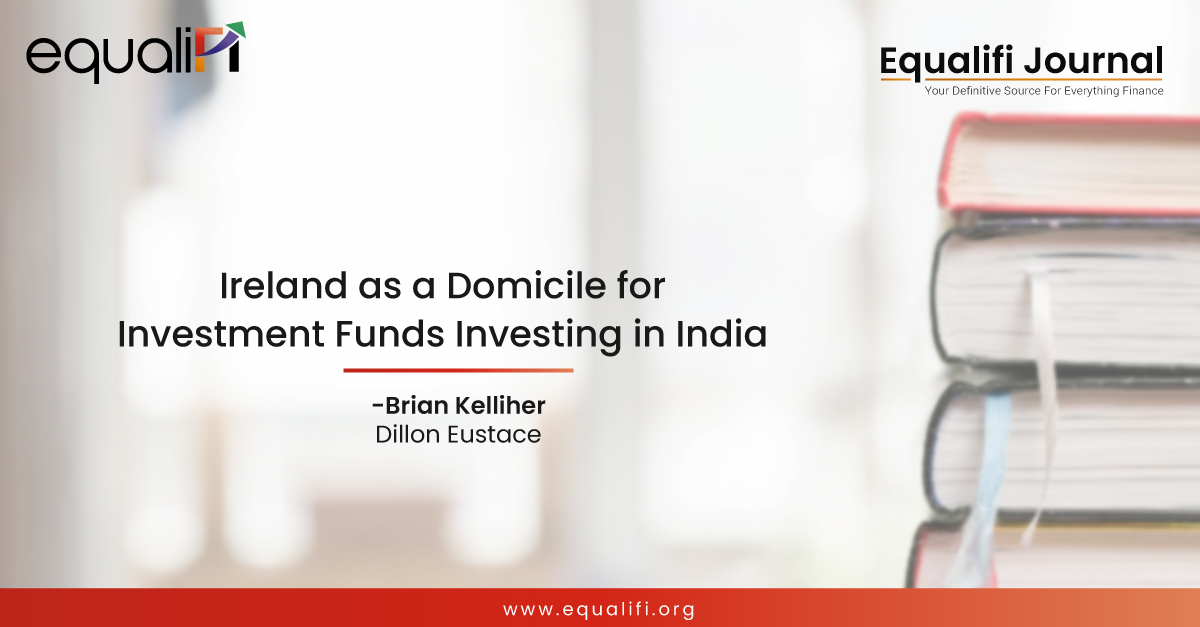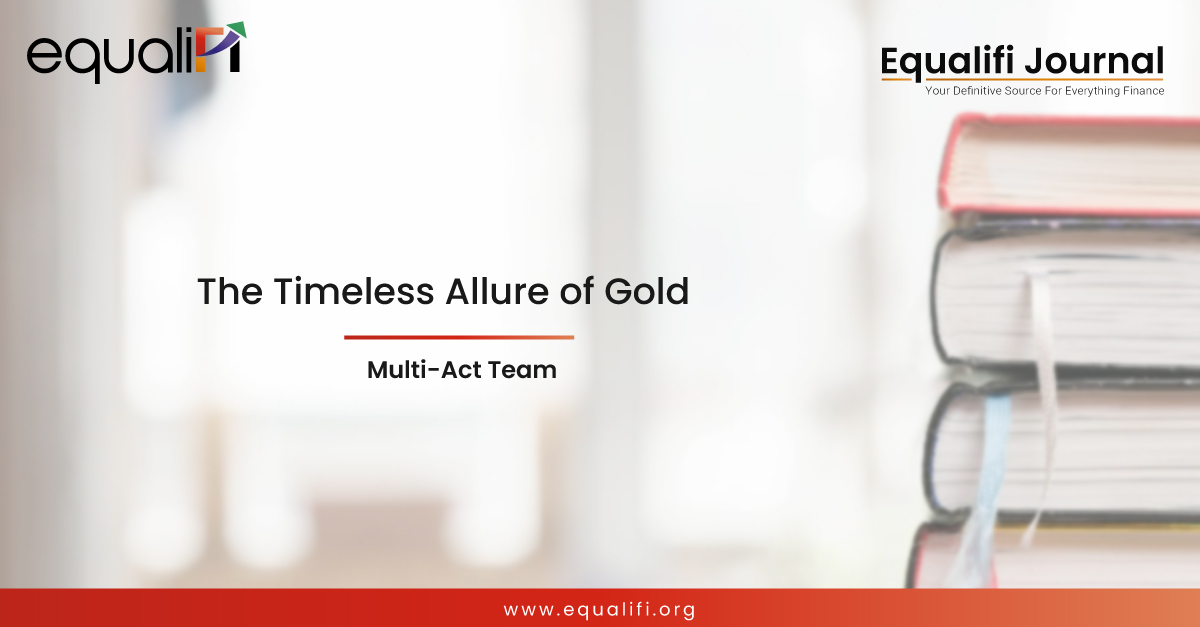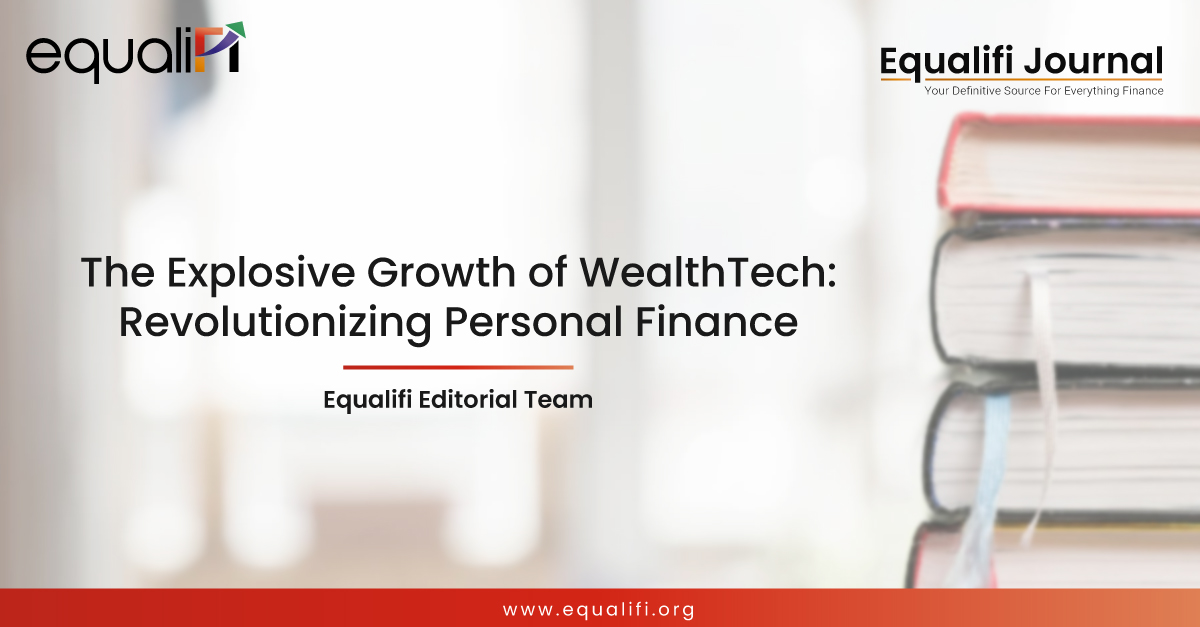Money Management An Emphasis on Policy Making
Posted on: March 23, 2022 | By: Vividh Bansal, Manager, Central Bank of India
Abstract
‘Money’ is a term familiar to us as currency prevailing in an area and has a physical form which varies over the geography of the world and has been linked to different nationally prevailing forms by international financial institutions like IMF and WTO facilitating trade and common exchange platforms there-by creating balance. Economy is a larger term and it relates to the management of money over a period of time, largely in centuries or in changing scenario in years, relating to the policy making by the controlling authorities and here at local level comes your financial institutions and on the larger level comes governing bodies which operate on certain rules and frameworks in tandem with each other to lead to a complex web of inter-mingled relationships. This leads to simultaneously happening monetary effects measured in terms of GDP, NDP, fiscal deficit, revenue deficit, FDI, FPI, balance of payments with vested end objectives.
Detailed Discussion
So ‘Money’ is important and for the ‘sustenance of life’ with high development index through proper interface with technological superiority keeping in mind the twin objectives of growth and prosperity it is necessary to, at times again and again, update with moving world. ‘Currency’ comes here as an important point which in today’s world under the pressure of crypto-currency is under tremendous pressure to change from traditional paper notes and coins to technological-advanced digital internet savvy crypto-currency. Policy-making holds a challenge in today’s world and in this paper we will concentrate on the same.
Indian Currency: Pros and Con’s
Indian currency is being managed and printed by Reserve Bank of India. It is maintained in several denominations which include as below from Rupees 1, 2, 5, 10, 20, 50, 100, 200, 500, 2000 with two variants of some of them in form of old and newer currency. Size, availability, and durability are some of the issues with the Indian currency. Especially higher denominations are now in a smaller size and they get mutilated very soon which erodes their value and also their market presentation. No one is ready to take this mutilated notes and exchange through RBI counter is cumbersome and not known to many and is also not easy.
Procurement and availability are other things but penetration and durability are some things that need to be looked upon by the RBI. You cannot expect to launch currency and within a month change half of them at your counters. RBI does not take into account many factors and some of them are its concept of value of notes.
Physical features of notes prevalent in Indian Economy:
On size basis:
- Smaller denominations
| Denomination | Length (cm) | Width (cm) | Area (in cm2) | Minimum area (in cm2) required for payment of full value* |
| (1) | (2) | (3) | (4) | (5) |
| 1 | 9.7 | 6.3 | 61.11 | 31 |
| 2 | 10.7 | 6.3 | 67.41 | 34 |
| 5 | 11.7 | 6.3 | 73.71 | 37 |
| 10 | 13.7 | 6.3 | 86.31 | 44 |
| 10 (New MG Series) | 12.3 | 6.3 | 77.49 | 39 |
| 20 | 14.7 | 6.3 | 92.61 | 47 |
| 20 (New MG Series) | 12.9 | 6.3 | 81.27 | 41 |
| *Indicated as the next complete higher square centimetre after half of the area of the notes in a particular denomination. | ||||
- Larger denominations
| Denomination | Length (cm) | Width (cm) | Area (in cm2) | Minimum area (in cm2) required for payment of full value@ | Minimum area (in cm2) required for payment of half value** |
| (1) | (2) | (3) | (4) | (5) | (6) |
| 50 | 14.7 | 7.3 | 107.31 | 86 | 43 |
| 50 (New MG Series) | 13.5 | 6.6 | 89.10 | 72 | 36 |
| 100 | 15.7 | 7.3 | 114.61 | 92 | 46 |
| 100 (New MG Series) | 14.2 | 6.6 | 93.72 | 75 | 38 |
| 200 | 14.6 | 6.6 | 96.36 | 78 | 39 |
| 500 | 15.0 | 6.6 | 99.00 | 80 | 40 |
| 2000 | 16.6 | 6.6 | 109.56 | 88 | 44 |
| @ Rounded off to the next complete higher square centimetre of 80% of the area of the notes in a particular denomination. ** Rounded off to the next complete higher square centimetre of 40% of the area of the notes in a particular denomination. | |||||
Above table giving sizes, area and total area required for the full area of notes
Prevalent Currency (In Rupee’s) in India
| Currency/Attribute | Size | Value | Success | Availability | Replacement | Any Scenario |
| 1 | Small | One | Fail | Very little | Coins (Widely) | Smallest Unit of currency in prevalence |
| 5 | Small | Five | Fail | Very little | Coins (Widely) | Not much prevalent |
| 10 | Small | Ten | Moderate | Few | Coins (Widely) | Prevalent |
| 20 | Medium | Twenty | Moderate | Few | Coins (Moderate) | Prevalent |
| 50 | Medium | Fifty | In circulation | Available | None | Prevalent |
| 100 | Medium | One Hundred | In circulation | Widely Available | None | Prevalent |
| 200 | Medium | Two hundred | Moderate | Few | None | Less Prevalent |
| 500 | Medium | Five hundred | In Circulation | Available | No Substitute | Widely Prevalent |
| 1000 | Large | One thousand rupees | Out of Circulation | Not available | None | Withdrawn |
| 2000 | Large | Two Thousand | Moderate | Few | No | Less Prevalent |
We can see that in the country we have large number of denominations that are circulating in the form of exchange medium. Still, some of these currencies which have been introduced have lost its significance due to unsuitability to keep it with them or due to size issues.
Government changed the currencies of 100, 500 and 2000 through the stopping of existing denominations of 500 and 1000 rupees and introducing 500 and 2000 rupees note as an exchange process which was catastrophic to reduce and shatter the Indian economy by introducing huge pressure on financial institutions and increasing the scope of malpractices – as more you try to curb the more routes are found out to pass undeterred and subsequently evils of cartelisation and crony capitalism were brought about.
It took some time to revive from it and we must not forget that in coming days – the days of a new global currency – crypto-currency will come. Already higher denomination note of rupees 2000 has been labelled as failure in market being too large and cumbersome. All the other denominations namely of 10, 20, 50, 100 and 500 the note size is an issue. Also, it has failed the test of time especially the higher denomination note of rupees 500 and smaller denomination note of rupees 10. Printing of rupees 10 has been too delayed.
Times to time measures are taken to sustain flow of currency in physical form conveniently at the discretion of the apex body of the Indian banking system. Still we see shortage of currency in public, availability in physical format has posed many difficulties and in India the sudden removal order of higher denomination currency from the markets has led to the questions on the physical format of currency issue, value and its existence. It leads us to a newer concept – Crypto-Currency.
Crypto-currencies
The money in circulation is in the form of notes and coins and they differ from nation to nations, like basic unit is different and the printing is different with the printing press and the one who promises to pay in case of notes and coins is different with each country having different apex organization and generally its head sits as a signing authority. They all are a part of centralized payment system – but crypto-currency is a de-centralized form of currency prevalent in world in a digital form which runs on an algorithm namely R-PoW (Re-usable proof of work) and PoS (Proof of Stake) respectively.
So here crypto-currency comes into play – a common currency – which is free from the boundaries of nation and it usually is in circulation through your online wallet. You can purchase it in your nation’s currency and then you can trade world-wide. It will bring stock markets, retail, e-commerce, public institutions and the entire apex bodies on one single platform – You just need to have access codes, namely your password and username – which will give you access to boundless seamless open platform where you will find the whole world at your door-step.
Technology-interfacing with mainframe machines running twenty four hours seamlessly in the back-end and application development with User-interface with all the tough cyber-security and other protocols adopted allows these internet savvy usage from anywhere till anything as per the desired object is in vicinity or is simply online. The technology allows rapid conversion and the computer does the computation for you, all you have to do is to click the keyboard so that you reach the designated website.
Well, crypto-currency can be made available in the form of labelled block-chain having unique addresses decoded in the form of hash methods where internet address of the creator of the block chain is too attached. Each time validation has to take place of generation of newer currency to let it available on the rest of the network each internet addresses should changed by the new number of crypto-currency generated. So if 50 newer crypto-currencies are generated automatically the internet address in the server should change the number of crypto currency by 50 and attach it to the bit coin issued. Then it should broadcast it to all the block-chains floating but there should be proper interfacing that only by sending the number of bit coins to be added, it should be updated and accordingly records of all block chain should change.
With each block-chain created the internet address of the creator should be attached with the block chain and each time validation is to be done for exchange the address of the block chain should act as a valuator that it exists. On creation simultaneous two entries should be made internet address of the creator with time-stamp on the block chain and other on the centrally located database which is updated by the same and when a newer block chain is created it should confirm through this centrally located database.
Crypto-Currency and India
In India, as highlighted above already a lot of currency in physical form is available and there exist even digital currency too. So a country where people are not so internet savvy I don’t think Crypto-Currency will do anything good. It will only lead to confusion and chaos. Crypto-currency and one virtual worldwide currency are what industry and tech savvy people are looking for and it answers the question concerned. Foreign super-powers are one of the most suited buyers of Crypto currency.
In India crypto currency can be clubbed with the existing currency in a way that whenever international travel is required the Indian currency can be changed into crypto currency and vice versa under international cyber security norms. There is no fraud, malpractice as such. All the currencies of the world are inter changeable by the international debit and credit cards and there is hardly any need of third party currency till it serves something bigger than exchange or medium of currency.
Prevalent Currency Exchange (Five Currencies namely Dollar, Rupee, Euro, Dinar, Ruble)
| Dollar | Rupee | Euro | Dinar | Ruble | |
| Value | 1 | 76.69 | .92 | .30 | 133 |
| Country | USA | India | Europe | Saudi Arabia | Russia |
| Available Denominations | 1, 2, 5, 10, 20, 50, 100 | As per table | 5,10,20,50,200, 500 | .5, 1, 5, 10, 20 (notes) 5, 10, 25, 50, 100, 500 (coins) | 5, 10, 50, 100, 500, 100, 5000 (notes) 1,2, 5, 10 (coins) |
| Feasibility (Regarding Usage) | Very High | Moderate | Very High | High | Moderate |
| Availability | High | Low | High | Low | Moderate |
| Convertibility | High | Moderate | High | Low | Low |
| Online Usage | Very High | High | Very High | High | Low |
| Common medium of exchange | Most | Lesser | Mostly | Lesser | Moderate |
| Country Status | Developed | Developing | Developed | Developing | Developed |
| Internet Status | Highly Developed | Moderate | Highly Developed | Moderate | Moderate |
| Ethnicity | American | Asian | White | Asian | Siberian |
| Health Facilities | Best | Moderate | Best | Moderate | Moderate |
| International Units (in IMF) | ADR’s | SDR’s | SDR’s | SDR’s | SDR’s |
Currency of Worlds
Dollar is the most favourable currency of the world and after it is Euro. Dollar and Euro to a large extent determines a country’s foreign reserve. FDI is a major component of the country NDP (National Domestic Product) and thus determines GDP as well as its growth percentage. Various institutions at the international level are collaborating with those operating nationally like IMF, WTO etc to maintain trade and balances of payment in order to maintain smooth exchange of currencies into each other.
Feasibility of Dollar and Euro for online transactions: It is very right that all the MRP of the products online should be in two forms – a. Local currency (Slightly Discounted) and b. Dollar form (With local taxes). This way a product will be able to be marketed internationally. Dollar, Euro is the currency prevalent in most of the part of the world. It is to be seen that with the trade-off between the local currencies automatically through computer generated algorithm it is possible that they will take the whole market and make it more sustainable and developed. As we see in the above table only these two currencies are making prominence on international level. Ruble and Dinar, two currencies of strong part of the world are not even in competition to the two nearby.
So we have e-commerce on the suggested platform and the international platform where people have started to possess virtual identity the virtual money too comes in question and here we have crypto-currency to take over all. No promissory, No central authority in command – crypto-currency functions on its own. It’s miner or creator what you call holds its cost and algorithm holds the secret to its valuation. Improving day by day it promises a lot for the future.
Underlying Norms to let the Crypto-Currency trade through Social Media:
Social media to be precise is an internet sensation to broadcast your views and opinions through text, video, channels, news, photos, places ad persons etc. In it you can control your viewership, reach and network.
‘Block chain’ has been used by the creators of Crypto Currency in which the creator on creation has to broadcast for common consensus. Now, in social media you have the concept of broadcast available with selective categorical features to hide/unhide information as and when desired.
How to administer Crypto-Currency on internet: There is a need to create a common creator page/profile/site on social media which has administrator’s right to create the Crypto-Currency which is interfaced with distributed database such that the creator takes permission from this page to mint new currency or to exchange existing currency and it updates after the transaction. This is broadcasted to every possessor of crypto-currency if required through messaging/email to the user in confidential manner or openly broadcasted if it was to be informed to everyone. So by selective/open broadcast we can control the common consensus with also the creator’s identity to be disclosed /hidden to be seen by the administrator of the Crypto Currency page.
So the block chain is created and the creator’s internet address with his profile details are captured which is broadcasted on the social media page for common consensus to enable new creation as a proof of work (PoW) and serves the required purpose as indicated above. Crypto-Currency are decentralized and have monetary value, the created crypto-currency cannot seize to exist at any cost – they can be exchanged or passed-on but not destroyed. To prevent consumption of large amount of electricity on validation/revalidation of the crypto-currency it is necessary to introduce a controlled database where on creation / updating of crypto-currency a suitable database query will be executed to lead to the desired status.
Where Banking Industry stands in this?
Banking institutions provide a platform to the transactions happening in the real world, well they are the connect between the physical and the virtual and already they have extensive reach to the common man through branches, offices and client side physical structures like ATM and miniature physical objects like kiosks, passbook printing machines etc. into various credit/debit cards which are available for use in the various internationally based transactions.
So it already is very much established and for the float of a newer crypto-currency through various channels like social media and others these institutions can serve as a backbone for the transaction confirmation and physical receipt of the same. Also, the manpower is trained enough for the related work so no doubt it is the answer to the physical basis of the float of newer currency.
References:
- Kapila, Uma 2011, Indian Economy: Performance and Policies, 10th Edition Academic Foundation
- Government of India 2014, Economic Survey 2013-14, Oxford Press
- Government of India 2014, Economic Survey 2013-14, Oxford Press
- Robbins, Stephen P., Judge, Timothy A., Sanghi, Seema 2009, Organizational Behavior, 13th Edition, Pearson Prentice Hall
- Cooper, Donald R, Schindler, Pamela S 2009, Business Research Method, 9th Edition Tata McGraw Hill
- Spencer, Lyle M., Spencer, Signe M. 2010, Competence at Work: Model For Superior Performance, Wiley-India Edition
- Ohmae, Kenichi 2013, The Mind of the Strategist: The Art of Japanese Business, 16th Edition Tata McGraw Hill
- Kotler, Philip, Keller, Kevin Lane, Koshy, Abraham, Jha, Mithileshwar, Marketing Management, 13th edition, Pearson Education
- Reserve Bank of India 2018, Reserve Bank of India (Note Refund) Rules, 2009








